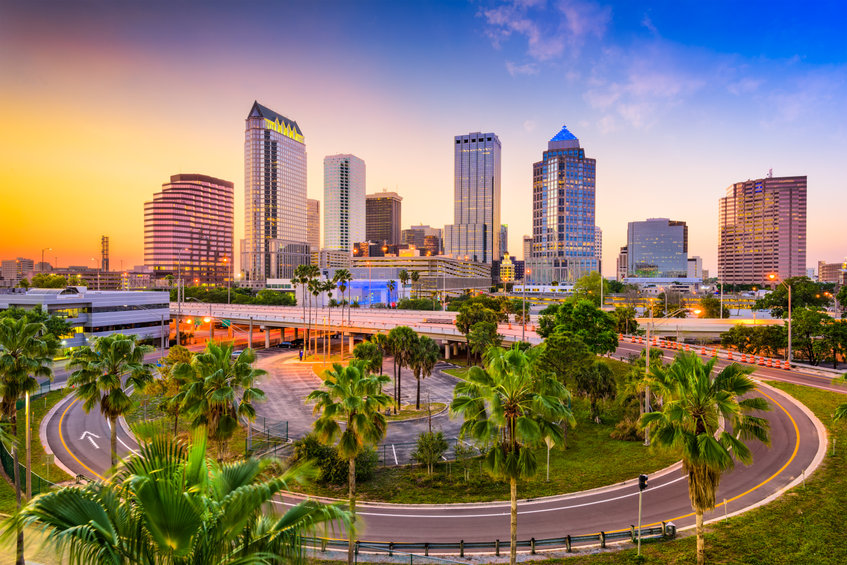Ignoring the bitter lessons from California and Europe, where the adoption of “climate friendly” energy policies has led to skyrocketing prices for electricity and transportation fuel, energy shortages, and rolling brownouts and blackouts, the powers that be in a densely populated county on Florida’s central Gulf Coast is recklessly embarking on a green journey that will not end well for local residents.
In November 2021, the Pinellas County Board of Commissioners adopted a resolution setting “clean energy” target as part of the Sierra Club’s “Ready for 100” campaign. The resolution sets goals to transition to renewable, zero-emission, “clean energy” use as follows:
- 50% of electricity for County government operations by 2030
- 100% of electricity for County government operations by 2040
- 100% countywide by 2050
Located on a peninsula between Tampa Bay and the Gulf of Mexico, Pinellas County is home to just under 1 million residents and has as its three-largest cities St. Petersburg, Clearwater, and Tarpon Springs. Like many other Florida counties, Pinellas has seen a rising influx of new residents fleeing colder weather, higher taxes, and stifling regulatory burdens.
But if the county’s Sierra Club-inspired transition to 100% renewable energy goes forward, reliable and affordable energy – something that many people have come to take for granted – will become a thing of the past.
We can begin by clarifying just what kind of renewable energy is on tap for Pinellas County.
Hydropower is affordable, reliable, and clean, but here is no suitable nearby river to damn up and, even if there were, people would object to thousands of acres being flooded to create a reservoir. Geothermal works well in Iceland and a smattering of other places, but it won’t work with the local geology. Nuclear power is clean and efficient but is hated by environmentalists, including the Sierra Club. It won’t be coming to the Tampa Bay area. Hydrogen has some potential, but as a commercially viable source of energy, it’s probably decades away, if ever. Wind power is pointless, because there is very little wind in the region. And, besides, people don’t move to the Gulf Coast so they can have a breathtaking view of wind turbines stretching hundreds of feet into the air.
That leaves us with solar power. There’s lots of sun in Pinellas County, but converting inherently intermittent sunlight into a source of energy that will be able to meet the growing power demands of the entire county in the decades to come is a mission impossible. Neither rooftop solar panels nor power derived from giant solar arrays nor a combination of both backed up by batteries will produce enough electricity for homes, businesses, and government facilities, including schools. And if industrial-scale solar arrays are constructed, where will they be located? Within the county proper, where there is very little available land? Or will they be located outside the county, in which case the electricity they produce will have to be brought in over long, unsightly power lines that will be bitterly opposed by many communities?
More Questions
How will the county, which trumpets its Sustainability and Resiliency Plan, deal with the serious environmental problem of solar waste. Photovoltaic solar panels, whether on rooftops or in arrays, have an advertised life expectancy of 20 to 30 years, but their efficiency begins to deteriorate long before they are declared “dead.” They are almost impossible to recycle, meaning they, laden with highly toxic chemicals that can leak, have to be dumped somewhere. The same holds true for the backup batteries which come into use at night or on cloudy days. Both the disposal of dead batteries and dead solar panels pose a serious environmental hazard, particularly to groundwater. Have the county commissioners dealt honestly with the public on this issue? To what extent are county commissioners even aware of these problems?
Pinellas is the first county in Florida, and the 15th in the nation, to adopt a 100% “clean energy” goal. The steps all these jurisdictions will take to force-feed the citizenry massive doses of intermittent solar energy will have no effect whatever on the climate, will lead to environmental degradation, and will drive up the cost of electricity for those who can least afford to pay more. Otherwise, it’s a great idea.
